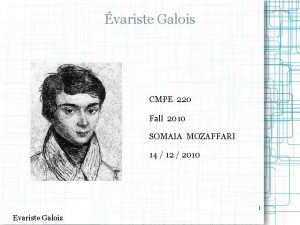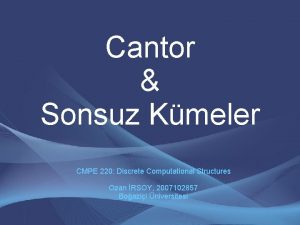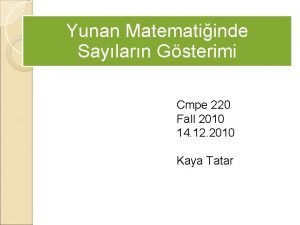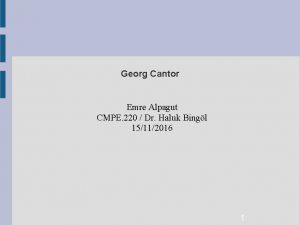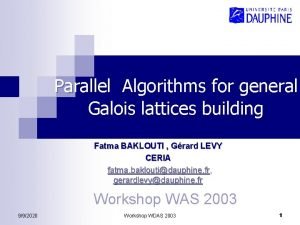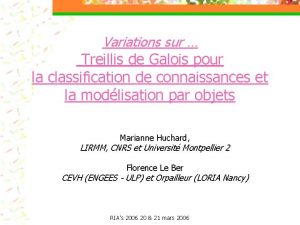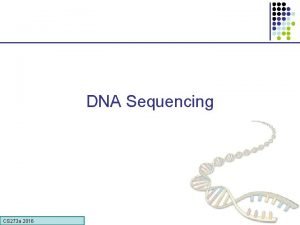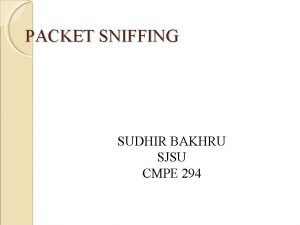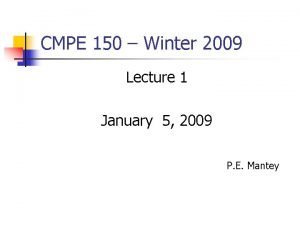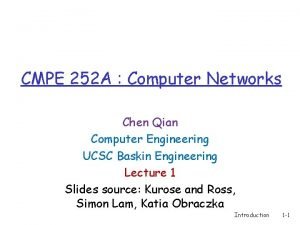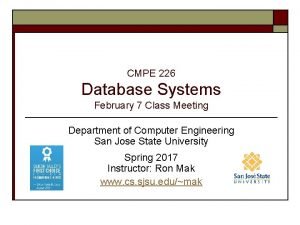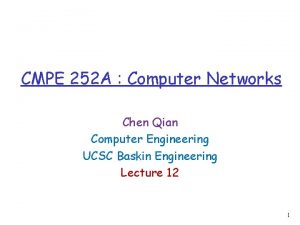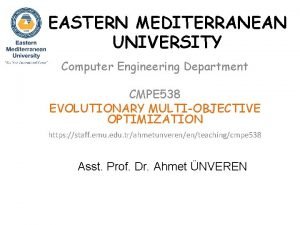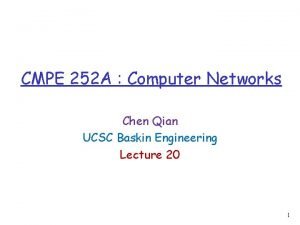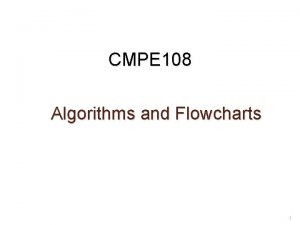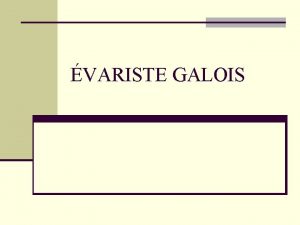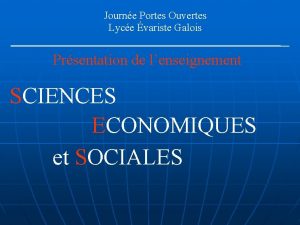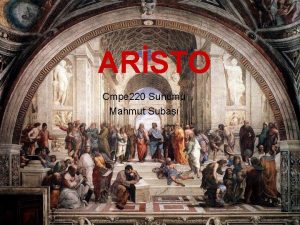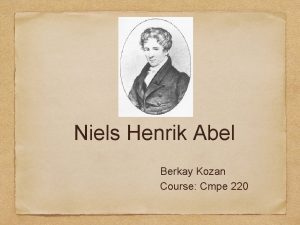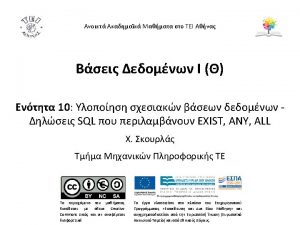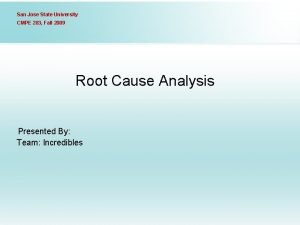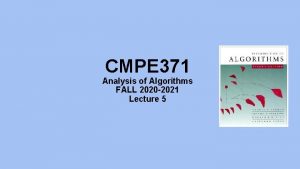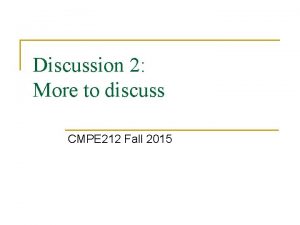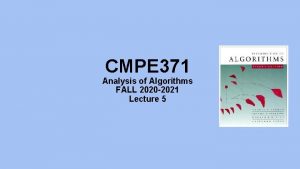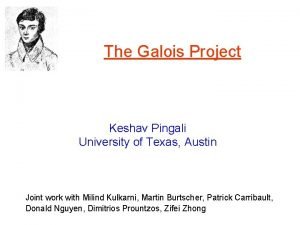variste Galois CMPE 220 Fall 2010 SOMAIA MOZAFFARI

























- Slides: 25

Évariste Galois CMPE 220 Fall 2010 SOMAIA MOZAFFARI 14 / 12 / 2010 1 Evariste Galois

Preface Born : October 25 1811 France Bourge-la-Reine Died : May 31 1832 (aged 20) Nationality : French fields : Mathematics Known for : work on theory of equations and Abelian integrals Galois age 15, drawn by a classmate 2 Evariste Galois

Évariste Galois Childhood Evariste Galois was born on the 25 th of October 1811. His father Nicolas-Gabriel Galois his mother Adélaϊde Marie Demante were very intelligent and were well trained in all the subjects considered important at that time: classical literature, religion and philosophy. There is no record of mathematical talent on the family. 3 Evariste Galois

Évariste Galois Childhood At the age of ten his parents decided to send him to a college in Reims, but his mother preferred to keep him at home. At home he received an excellent education in Latin, Greek and rhetoric. 4 Evariste Galois

School Days In 1823 Galois entered the lycée Louis-le-Grand in Paris and despite some turmoil in the school at the beginning of the term. Galois managed to perform well for the first two years. He soon became bored with his studies, and at the age of 14, he began to take a serious interest in mathematics. 5 Evariste Galois

School Days In February 1827 Galois enrolled in his first mathematics class. It was during this course that Galois worked with Legendre's text on geometry and he was maybe for the first time acquainted with theory of equations by Lagrange's works. 6 Evariste Galois

Budding Mathematician In 1828, he attempted the entrance exam to École Polytechnique, but failed for lack of explanations on the oral examination. In the same year, he entered the École Normale , where he found some professors sympathetic to him. 7 Evariste Galois

Budding Mathematician In the following year, Galois' first paper, on continued fractions, was published. It was at around the same time that he began making fundamental discoveries in theory of polynomial equations. 8 Evariste Galois

His Political Life Galois have been interested in politics when he was still attending the Louis-le-Grand. But his political activities started mainly at the Ecole Normale. Galois lived during a time of political turmoil in France. 9 Evariste Galois

His Political Life While their counterparts at Polytechnique were making history in the streets during that time, Galois and all the other students at the École Normale were locked in by the school's director. 10 Evariste Galois

His Political Life Galois have joined the " Society of Friends of the People" some months later. It was an organization which its members were the most active and aggressive ones of the republican party. 11 Evariste Galois

His Political Life Evariste asked for the students to be armed, so they could have military training. Apparently, most of his fellow students were avoiding Galois and his radical ideas. Evariste Galois was expelled from school on the 9 th of December - publicly announced on the 4 th of January - because of an anonymous letter to the "Gazette des Écoles". In this letter the director was blamed for his behavior during the July revolution. 12 Evariste Galois

His Political Life During these activities Galois was imprisoned at Sainte-Pélagie and on the 15 th of June he was tried for threatening the King's life. He was released on April 29, 1832. During his imprisonment, he continued developing his mathematical ideas. 13 Evariste Galois

Galois Returned to Mathematics Galois returned to mathematics after his expulsion from the École Normale, although he was constantly distracted by his political activities. After his expulsion became official in January 1831, he attempted to start a private class in advanced algebra which did manage to attract a fair bit of interest. 14 Evariste Galois

Galois Returned to Mathematics Simeon Poisson asked Galois to submit his work on theory of equations. Around July 4, Poisson declared Galois' work "incomprehensible", declaring that "[Galois'] argument is neither sufficiently clear nor sufficiently developed to allow us to judge its rigor; We would then suggest that the author should publish the whole of his work in order to form a definitive opinion. " 15 Evariste Galois

Galois Returned to Mathematics Galois did not ignore Poisson's advice and began collecting all his mathematical manuscripts while he was still in prison, and continued polishing his ideas until his release on April 29, 1832. 16 Evariste Galois

The Duel Galois' fatal duel took place on May 30. The true motives behind the duel will most likely remain forever obscure. 17 Evariste Galois

The Duel The most likely reason is: He was weary of life, because of his unhappy love affair, his fruitless efforts for gaining recognition for his mathematical work, his financial and work situation and he felt finished up a blind alley in politics as well. So his duel was like a staged suicide. It is still not clear who the other dueller a supposed political friend was. 18 Evariste Galois

The Final Day Early in the morning of May 30, 1832, he was shot in the abdomen and died the following day. He was 20 years old. His last words to his brother Alfred were: (Don't cry, Alfred! I need all my courage to die at Evariste Galois 19

Group Theory It was Galois who was the first to use the word 'group' (in French groupe) in a sense close to the technical sense that is understood today, and one of the key founders of the branch of algebra known as group theory. 20 Evariste Galois

Group Theory He developed the concept that is today known as a normal subgroup. 21 Evariste Galois

Group Theory He also introduced the concept of a finite field (also known as a Galois field in his honor). He constructed the general linear group over a prime field, GL(ν, p) and computed its order. 22 Evariste Galois

Group Theory He constructed the projective special linear group PSL(2, p). Galois constructed them as fractional linear transforms. 23 Evariste Galois

Galois Theory Galois' most significant contribution to mathematics by far is his development of Galois theory. He realized that the algebraic solution to a polynomial equation is related to the structure of a group of permutations associated with the roots of the polynomial, the Galois group of the polynomial. 24 Evariste Galois

References http: //www. wikipedia. org http: //mathworld. wolfram. com http: //www. galois-group. net 25 Evariste Galois
 Variste galois
Variste galois Mahsa mozaffari
Mahsa mozaffari Kmeler
Kmeler Yunan harfleri
Yunan harfleri Dr. karabatak
Dr. karabatak Cipher based message authentication code
Cipher based message authentication code Galois
Galois Jaye chen
Jaye chen Treillis de galois
Treillis de galois After the fall 2010
After the fall 2010 Cmpe 280
Cmpe 280 Cmpe 273
Cmpe 273 Cmpe 280
Cmpe 280 Cmpe 280
Cmpe 280 Cs 273
Cs 273 Cmpe 294
Cmpe 294 Cmpe 150
Cmpe 150 Cmpe 280
Cmpe 280 Qian chen ucsc
Qian chen ucsc Chen qian ucsc
Chen qian ucsc Cmpe 226
Cmpe 226 Cmpe 252
Cmpe 252 Computer engineering
Computer engineering Cmpe150
Cmpe150 Cmpe 252
Cmpe 252 Examples of algorithm
Examples of algorithm
